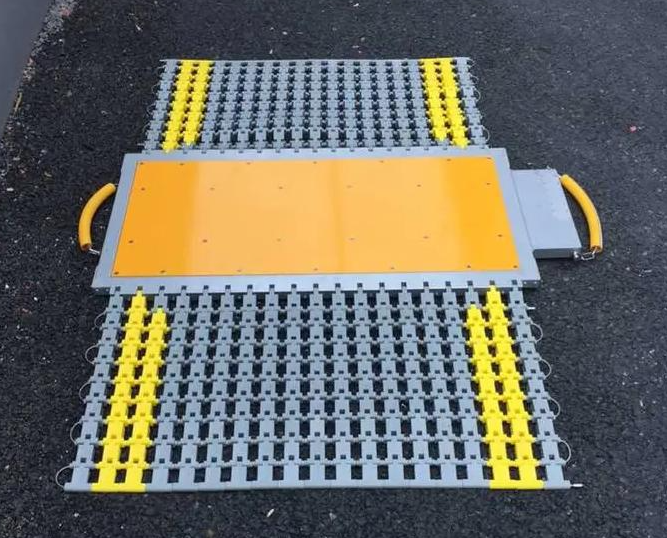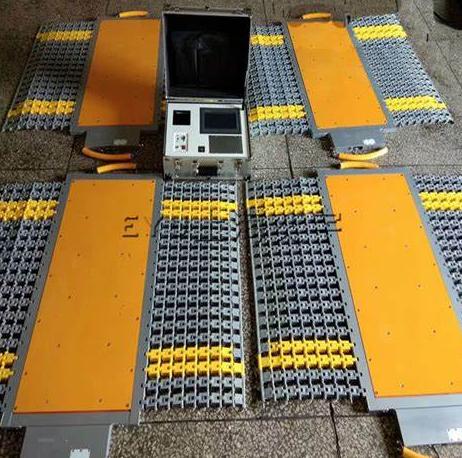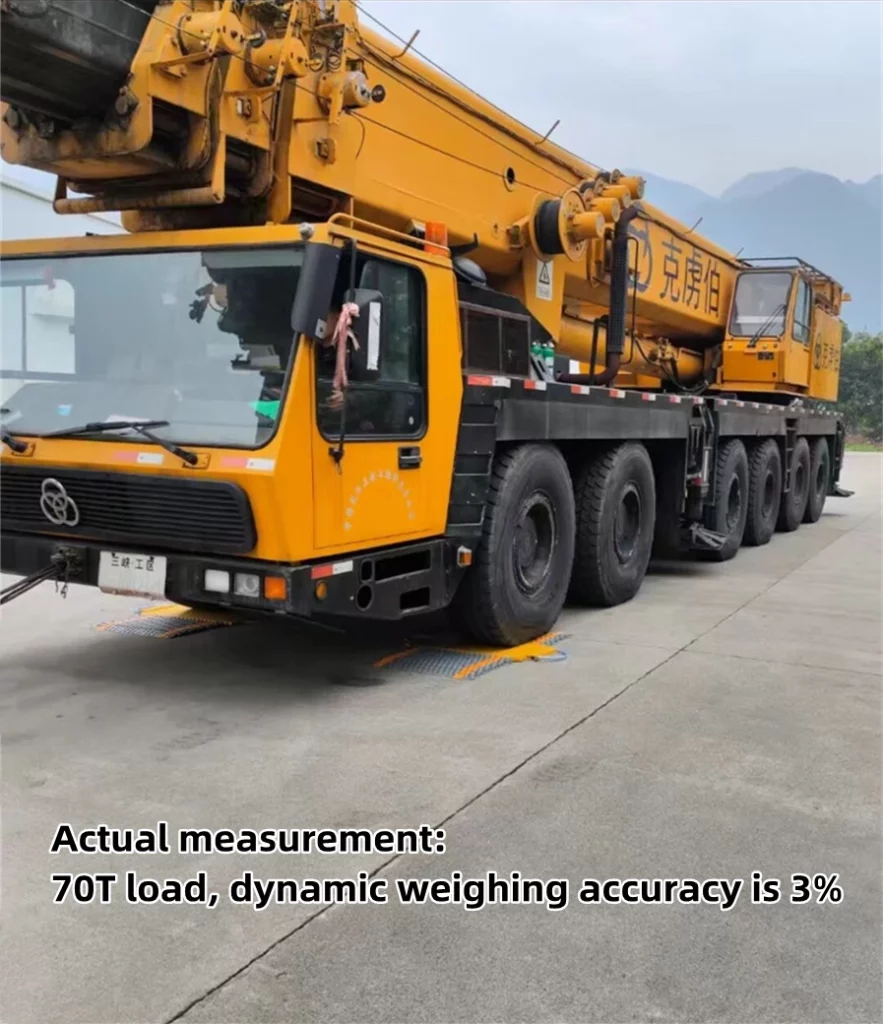How to Weigh a Truck With Portable Scales? – Comprehensive Guide
In the modern transportation and logistics industry, truck weighing is not only essential for complying with legal regulations and ensuring transport safety, but also a key factor in improving transportation efficiency and reducing operating costs.
As a flexible and precise weighing tool, portable truck scales have become an essential tool for truck drivers and transportation companies. Here we will provide a comprehensive guide on how to weigh trucks with portable scales, helping you master the weighing process and ensure truck safety and compliance.
Part 1. What are Portable Truck Scales?
Portable truck scales are lightweight and efficient weighing tools designed for weighing trucks in various locations and environments. Unlike traditional fixed-ground scales, portable scales do not require specialized infrastructure or dedicated spaces.
They can be quickly deployed and used for on-site weighing. Whether measuring the total weight of the entire vehicle or individual axle loads, portable truck scales provide precise weight data.
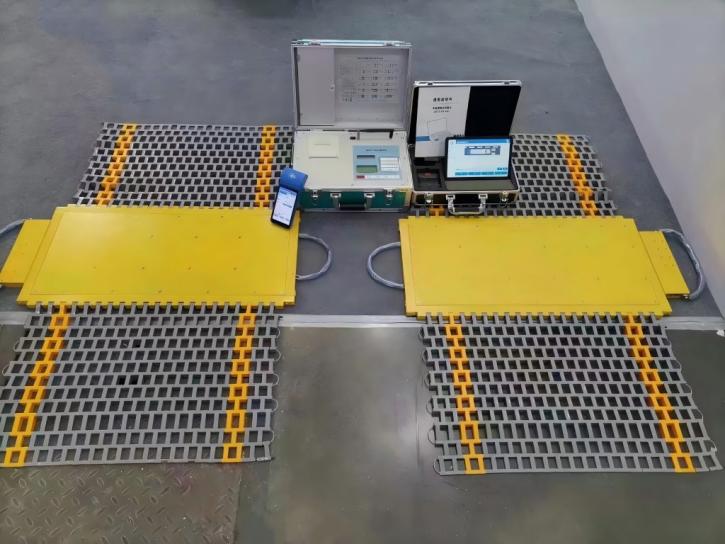
Part 2. Different Types of Portable Truck Scales
There are various types of portable truck scales, each designed to meet different needs and requirements. Below are the common types of portable truck scales and their features.
1. Electronic Portable Truck Scales
Electronic portable truck scales are the most common type on the market, using advanced electronic sensors and digital display systems to accurately measure weight. These scales can quickly calculate the weight of a vehicle and display the results in real-time on a digital screen.
Features:
- High precision with detailed load data.
- Clear and easy-to-read digital display, simple operation.
- Can connect to printers or data storage devices for data recording and report printing.
- Many models offer wireless communication for easy data transfer.
Use Cases:
- Suitable for various environments, including logistics, freight inspection, and construction machinery weighing.
- Especially useful for applications requiring frequent weighing, such as roadside inspection stations, transport companies, and logistics warehouses.
2. Hydraulic Portable Truck Scales
Hydraulic portable truck scales use hydraulic sensors to detect the weight below the truck’s axle. This type of scale is commonly used for heavy trucks or vehicles that are overloaded, providing increased load-bearing capacity.
Features:
- Suitable for weighing heavy trucks and overloaded vehicles.
- Uses hydraulic technology to measure loads up to several dozen tons.
- High durability, suitable for harsh working environments.
- Compared to electronic scales, hydraulic scales are often more robust and durable, ideal for construction sites and other tough environments.
Use Cases:
- Used in mining, construction sites, and heavy machinery applications.
- Ideal for measuring single axle or total vehicle weight, especially in heavy-duty vehicle operations.
3. Portable Axle Load Scale
Portable Axle Load Scale is designed to measure the weight of individual truck axles, providing an efficient solution for checking axle load distribution and ensuring legal weight compliance.
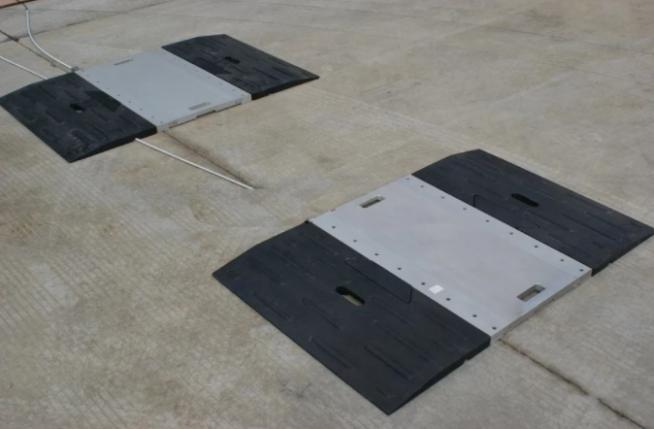
Features:
- Measures the weight of individual truck axles for precise load distribution checks.
- Lightweight design for quick deployment at various locations.
- Built to withstand harsh outdoor conditions, making it ideal for construction sites and roadside inspections.
- Some models provide wireless connectivity for real-time data collection.
- Many models operate without external power, making them ideal for on-the-go use.
Use Cases:
- Used by authorities to check vehicle axle weights and ensure compliance with weight regulations.
- Helps transport companies monitor axle load distribution for safe and efficient transport.
- Measures the weight of trucks and heavy equipment to prevent overloading and extend the vehicle lifespan.
4. Wireless Portable Truck Scales
Wireless portable truck scales use wireless technology to transmit weight data to a display device or computer system in real time. This type of scale is suitable for environments that require remote monitoring or real-time data analysis.
Features:
- Wireless connection, allowing for remote monitoring and data analysis.
- Data can be directly transmitted to the cloud or database for management and archiving.
- Convenient to operate, supporting mobile devices.
- Most models support multiple weighing modes, such as axle weight measurement and full vehicle weight measurement.
Use Cases:
- Ideal for modern logistics management and environments requiring data analysis.
- Suitable for transport companies, freight carriers, multinational companies, and others.
5. Ground-based Portable Truck Scales
Ground-based portable truck scales primarily work by placing the weighing plate directly beneath the truck’s wheels or on the ground. These scales are designed for quick deployment and are usually simpler than other types of portable scales, making them ideal for temporary inspections or fast load measurements.
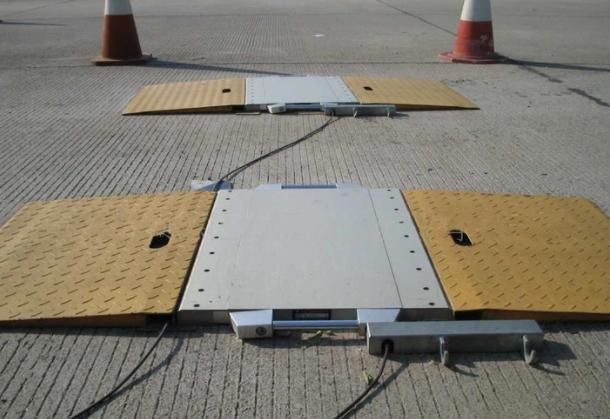
Features:
- Adjustable weighing surface to accommodate different types of wheels.
- Simple structure, easy to install and disassemble quickly.
- Some models support single axle weighing, and others can measure the full vehicle weight.
Use Cases:
- Suitable for temporary weighing tasks, such as roadside inspection stations or quick load detection.
- Ideal for environments that require rapid deployment and removal.
Part 3. How Portable Truck Weight Scales Work?
Portable truck weight scales use advanced sensor technology to accurately measure the weight of a truck or its individual axles. The scale is placed under the truck and when it drives over or onto the scale, the sensors detect the pressure exerted by the weight.
This information is then processed and displayed either digitally or wirelessly for real-time monitoring. Depending on the design, these scales can measure the total vehicle weight or the weight distribution across different axles, ensuring compliance with weight regulations and preventing overloading.
The portable nature of these scales makes them ideal for field inspections, logistics, and construction environments, as they can be quickly set up and transported.
Part 4. How to Use Portable Truck Scales
Using portable truck scales is simple and efficient. Here’s a general guide on how to use them:
Step 1. Prepare the Scale
Place the scale on a flat, level surface where you plan to weigh the truck. If the scale is wireless, make sure the display device or remote monitor is within range.
Step 2. Calibrate the Scale (if needed)
Some scales may need to be calibrated before use. Follow the manufacturer’s instructions to ensure accurate readings.
Step 3. Position the Scale
Position the scale under the truck’s axle to ensure proper alignment. If the scale measures individual axles, place them one by one under each axle.
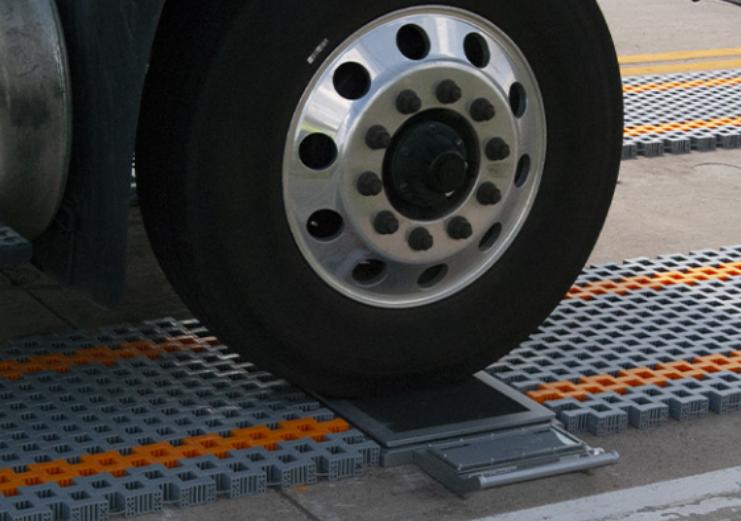
Step 4. Drive the Truck onto the Scale
Slowly drive the truck over the scale, ensuring that the axle(s) are fully on the weighing platform. For precise readings, make sure the truck is stationary while on the scale.
Step 5. Read the Results
Once the truck is positioned, the scale will provide a weight reading for each axle or the total weight. This information can be displayed on a digital screen or transmitted wirelessly to a remote monitor or device.
Step6. Record and Analyze Data
Depending on the model, you can either manually record the readings or save the data for future reference. Use the data to check compliance with weight regulations or optimize load distribution.
Step 7. Repeat for Additional Axles
If measuring multiple axles, repeat the process for each axle as necessary. After use, disconnect the scale and store it securely in a safe location for transport to the next site.
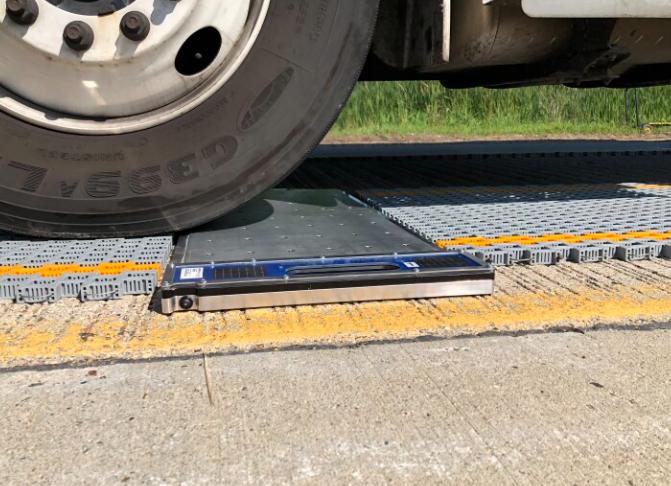
Notice:
- During the weighing process, make sure the truck remains stationary to avoid any vibrations.
- If you need to measure the weight of multiple axles several times, make sure each axle is accurately placed on the scale surface.
- Clean the equipment promptly after use, especially when using hydraulic scales, and check for oil leaks and other problems.
Part 5. Advantages of Portable Truck Scales
Flexibility
The greatest advantage of portable scales is their flexibility. They can be used for weighing anywhere and anytime, whether during transportation or on construction sites, providing instant weighing services.
Ensure Legal Compliance
Different regions have specific regulations regarding truck maximum load capacity. Overloaded trucks can face fines, demerit points, and other penalties. By using portable scales, truck owners can quickly check their vehicle’s weight to avoid overloading, ensuring compliance with local regulations.
Improve Transportation Safety
Overloading a truck can make it unstable, increase stopping distances, and decrease driving safety. By properly weighing the truck, owners can prevent it from being overloaded, reducing the likelihood of traffic accidents.
Optimize Transport Efficiency
Portable scales allow truck owners to weigh their vehicles at any point during the transportation process, providing real-time insight into the vehicle’s weight. This helps optimize cargo distribution and minimize additional costs caused by overloading.
Best Portable Scales to Weigh Trucks – Bincen Portable Axle Load Scale
If you are looking for a right portable scales to weigh trucks, Bincen Portable Axle Load Scale stands out as one of the best options on the market. This portable scale, designed to accurately measure each axle, is perfect for various applications, including roadside inspections, logistics, and heavy equipment operations.

